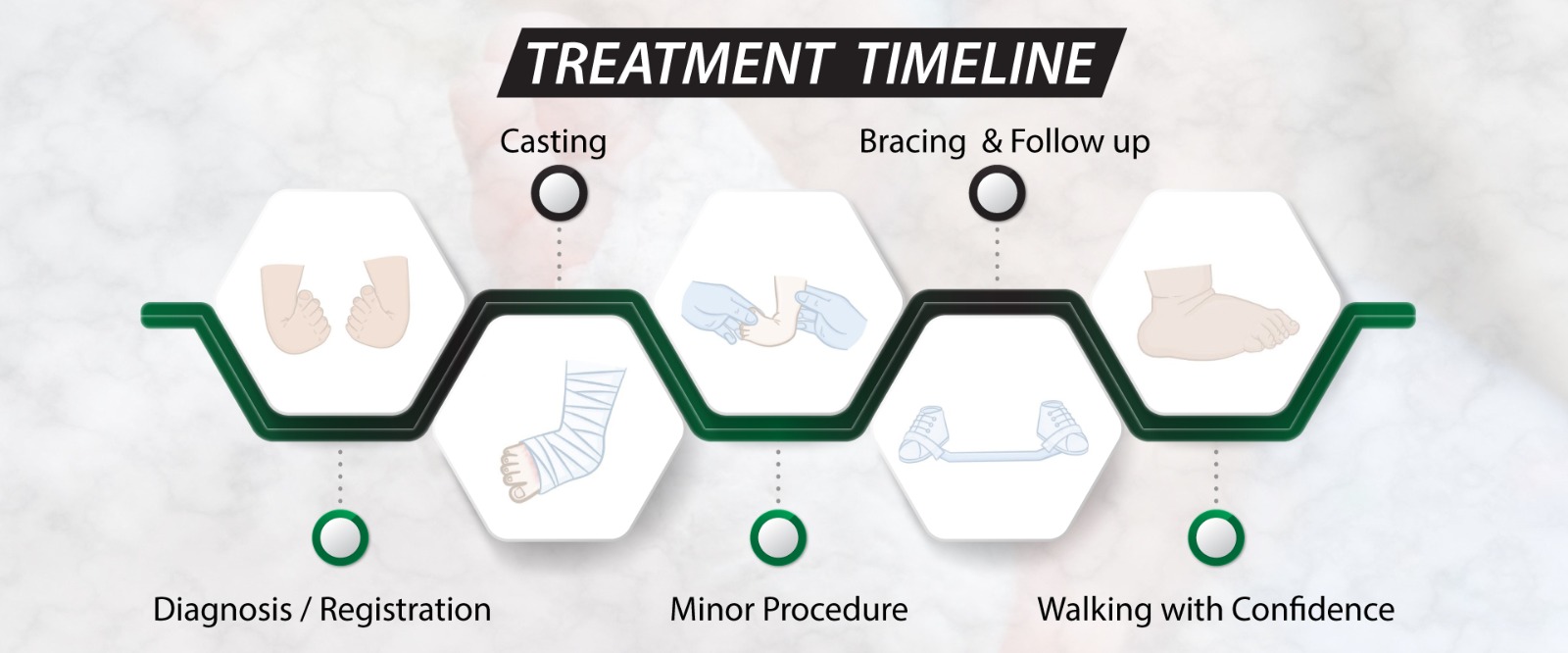
Diagnosis
Clubfoot is usually diagnosed soon after birth by simply looking at the baby’s foot position and shape. In most cases, no special tests are needed. Sometimes an X-ray may be done to check how severe the deformity is.
Modern ultrasound scans can also detect clubfoot as early as the 20th week of pregnancy, giving parents time to learn about the condition and plan early treatment with specialists.
Treatment
Treatment begins within the first few weeks after birth, when a baby’s bones and tendons are still soft and flexible. Early care gives the best long-term results and helps the child walk normally.
The Ponseti method is the most common and effective treatment worldwide — and the one practiced at our centre.
It involves:
Gentle stretching and weekly casting of the foot for several weeks.

A minor procedure to loosen the tight heel tendon (Achilles tendon).

Wearing a brace or special shoes to keep the foot in the corrected position — full time for the first few months, then during sleep until the age of 3–4 years.

Parents play an important role by ensuring that the braces are worn as instructed, as this prevents the foot from turning inward again.In a few cases where casting alone does not correct the deformity, surgical correction may be required. This may involve repositioning or lengthening tendons to improve foot alignment. Surgery is usually followed by casting and bracing to maintain the correction.With proper and timely treatment, most children grow up to walk, run, and play normally — without pain or limitation.
